- Home
- Arthur C. Clarke
3001: The Final Odyssey Page 17
3001: The Final Odyssey Read online
Page 17
Poole left the balcony and rushed into his room just in time to see Lucifer blaze reassuringly on the vidscreen.
“What's happened,” the Mayor continued breathlessly, “is that something has caused a temporary eclipse – we'll zoom in to look at it... Callisto Observatory, come in please...”
How does he know it's “temporary”? thought Poole, as he waited for the next image to come up on the screen.
Lucifer vanished, to be replaced by a field of stars. At the same time, the Mayor faded out and another voice took over:
“ –two-meter telescope, but almost any instrument will do. It's a disc of perfectly black material, just over ten thousand kilometers across, so thin it shows no visible thickness. And it's placed exactly – obviously deliberately – to block Ganymede from receiving any light.
“We'll zoom in to see if it shows any details, though I rather doubt it...”
From the viewpoint of Callisto, the occulting disc was foreshortened into an oval, twice as long as it was wide. It expanded until it completely filled the screen; thereafter, it was impossible to tell whether the image was being zoomed, as it showed no structure whatsoever.
“As I thought – there's nothing to see. Let's pan over to the edge of the thing...”
Again there was no sense of motion, until a field of stars suddenly appeared, sharply defined by the curving edge of the world-sized disc. It was exactly as if they were looking past the horizon of an airless, perfectly smooth planet.
No, it was not perfectly smooth...
“That's interesting,” commented the astronomer, who until now had sounded remarkably matter-of-fact, as if this sort of thing was an everyday occurrence. “The edge looks jagged – but in a very regular fashion – like a saw-blade...”
A circular saw, Poole muttered under his breath. Is it going to carve us up? Don't be ridiculous...
“This is as close as we can get before diffraction spoils the image – we'll process it later and get much better detail:”
The magnification was now so great that all trace of the disc's circularity had vanished. Across the vidscreen was a black band, serrated along its edge with triangles so identical that Poole found it hard to avoid the ominous analogy of a saw-blade. Yet something else was nagging at the back of his mind...
Like everyone else on Ganymede, he watched the infinitely more distant stars drifting in and out of those geometrically perfect valleys. Very probably, many others jumped to the same conclusion even before he did.
If you attempt to make a disc out of rectangular blocks – whether their proportions are 1:4:9 or any other – it cannot possibly have a smooth edge. Of course, you can make it as near a perfect circle as you like, by using smaller and smaller blocks. Yet why go to that trouble, if you merely wanted to build a screen large enough to eclipse a sun?
The Mayor was right; the eclipse was indeed temporary. But its ending was the precise opposite of a solar one.
First light broke through at the exact center, not in the usual necklace of Bailey's Beads along the very edge. Jagged lines radiated from a dazzling pinhole – and now, under the highest magnification, the structure of the disc was being revealed. It was composed of millions of identical rectangles, perhaps the same size as the Great Wall of Europa. And now they were splitting apart: it was as if a gigantic jigsaw puzzle was being dismantled.
Its perpetual, but now briefly interrupted, daylight was slowly returning to Ganymede, as the disc fragmented and the rays of Lucifer poured through the widening gaps. Now the components themselves were evaporating, almost as if they needed the reinforcement of each other's contact to maintain reality.
Although it seemed like hours to the anxious watchers in Anubis City, the whole event lasted for less than fifteen minutes. Not until it was all over did anyone pay attention to Europa itself.
The Great Wall was gone: and it was almost an hour before the news came from Earth, Mars and Moon that the Sun itself had appeared to flicker for a few seconds, before resuming business as usual.
It had been a highly selective set of eclipses, obviously targeted at humankind. Nowhere else in the Solar System would anything have been noticed.
In the general excitement, it was a little longer before the world realized that TMA ZERO and TMA ONE had both vanished, leaving only their four-million-year-old imprints on Tycho and Africa.
It was the first time the Europs could ever have met humans, but they seemed neither alarmed nor surprised by the huge creatures moving among them at such lightning speed. Of course, it was not too easy to interpret the emotional state of something that looked like a small, leafless bush, with no obvious sense organs or means of communication. But if they were frightened by the arrival of Alcyone, and the emergence of its passengers, they would surely have remained hiding in their igloos.
As Frank Poole, slightly encumbered by his protective suit and the gift of shining copper wire he was carrying, walked into the untidy suburbs of Tsienville, he wondered what the Europs thought of recent events. For them, there had been no eclipse of Lucifer, but the disappearance of the Great Wall must surely have been a shock. It had stood there for a thousand years, as a shield and doubtless much more; then, abruptly, it was gone, as if it had never been...
The petabyte tablet was waiting for him, with a group of Europs standing around it, demonstrating the first sign of curiosity that Poole had ever observed in them. He wondered if Halman had somehow told them to watch over this gift from space, until he came to collect it.
And to take it back, since it now contained not only a sleeping friend but terrors which some future age might exorcise, to the only place where it could be safely stored.
40. Midnight: Pico
It would be hard, Poole thought, to imagine a more peaceful scene – especially after the trauma of the last weeks. The slanting rays of a nearly full Earth revealed all the subtle details of the waterless Sea of Rains – not obliterating them, as the incandescent fury of the Sun would do.
The small convoy of mooncars was arranged in a semicircle a hundred meters from the inconspicuous opening at the base of Pico that was the entrance to the Vault. From this viewpoint, Poole could see that the mountain did not live up to the name that the early astronomers, misled by its pointed shadow, had given to it. It was more like a rounded hill than a sharp peak, and he could well believe that one of the local pastimes was bicycle-riding to the summit. Until now, none of those sportsmen and women could have guessed at the secret hidden beneath their wheels: he hoped that the sinister knowledge would not discourage their healthy exercise.
An hour ago, with a sense of mingled sadness and triumph, he had handed over the tablet he had brought – never letting it out of his sight – from Ganymede directly to the Moon.
“Goodbye, old friends,” he had murmured. “You've done well. Perhaps some future generation will reawaken you. But on the whole – I rather hope not.”
He could imagine, all too clearly, one desperate reason why Halman's knowledge might be needed again. By now, surely, some message was on its way to that unknown control center, bearing the news that its servant on Europa no longer existed. With reasonable luck, it would take 950 years, give or take a few, before any response could be expected.
Poole had often cursed Einstein in the past; now he blessed him. Even the powers behind the Monoliths, it now appeared certain, could not spread their influence faster than the speed of light. So the human race should have almost a millennium to prepare for the next encounter – if there was to be one. Perhaps by that time, it would be better prepared.
Something was emerging from the tunnel – the track-mounted, semi-humanoid robot that had carried the tablet into the Vault. It was almost comic to see a machine enclosed in the kind of isolation suit used as protection against deadly germs and here on the airless Moon! But no one was taking any chances, however unlikely they might seem. After all, the robot had moved among those carefully sequestered nightmares, and although according to its vid
eo cameras everything appeared in order, there was always a chance that some vial had leaked, or some canister's seal had broken. The Moon was a very stable environment, but during the centuries it had known many quakes and meteor impacts.
The robot came to a halt fifty meters outside the tunnel. Slowly, the massive plug that sealed the Vault swung back into place, and began to rotate in its threads, like a giant bolt being screwed into the mountain.
“All not wearing dark glasses, please close your eyes or look away from the robot!” said an urgent voice over the mooncar radio. Poole twisted round in his seat, just in time to see an explosion of light on the roof of the vehicle. When he turned back to look at Pico, all that was left of the robot was a heap of glowing slag; even to someone who had spent much of his life surrounded by vacuum, it seemed altogether wrong that tendrils of smoke were not slowly spiralling up from it.
“Sterilization completed,” said the voice of the Mission Controller. “Thank you, everybody. Now returning to Plato City.”
How ironic – that the human race had been saved by the skilful deployment of its own insanities! What moral, Poole wondered, could one possibly draw from that?
He looked back at the beautiful blue Earth, huddling beneath its tattered blanket of clouds for protection against the cold of space. Up there, a few weeks from now, he hoped to cradle his first grandson in his arms.
Whatever godlike powers and principalities lurked beyond the stars, Poole reminded himself, for ordinary humans only two things were important – Love and Death.
His body had not yet aged a hundred years: he still had plenty of time for both.
EPILOGUE
“Their little universe is very young, and its god is still a child. But it is too soon to judge them; when We return in the Last Days, We will consider what should be saved.”
SOURCES AND ACKNOWLEDGMENTS
SOURCES
Chapter 1: The Kuiper Belt
For a description of Captain Chandler's hunting ground, discovered as recently as 1992, see “The Kuiper Belt” by Jane X. Luu and David C. Jewitt (Scientific American, May 1996)
Chapter 3: Rehabilitation
I believed that I had invented the palm-to-palm transfer of information, so it was mortifying to discover that Nicholas ("Being Digital") Negroponte (Hodder and Stoughton, 1995) and his MIT Media Lab have been working on the idea for years...
Chapter 4: Star City
The concept of a “ring around the world” in the geostationary orbit (CEO), linked to the Earth by towers at the Equator, may seem utterly fantastic but in fact has a firm scientific basis. It is an obvious extension of the “Space Elevator” invented by the St Petersburg engineer Yuri Artsutanov, whom I had the pleasure of meeting in 1982, when his city had a different name.
Yuri pointed out that it was theoretically possible to lay a cable between the Earth and a satellite hovering over the same spot on the Equator which it does when placed in the CEO, home of most of today's communications satellites. From this beginning, a space elevator (or in Yuri's picturesque phrase, “cosmic funicular”) could be established, and payloads could be carried up to the CEO purely by electrical energy. Rocket propulsion would be needed only for the remainder of the journey.
In addition to avoiding the danger, noise and environmental hazards of rocketry, the space elevator would make possible quite astonishing reductions in the cost of all space missions. Electricity is cheap, and it would require only about a hundred dollars' worth to take one person to orbit. And the round trip would cost about ten dollars, as most of the energy would be recovered on the downward journey! (Of course, catering and inflight movies would put up the price of the ticket. Would you believe a thousand dollars to CEO and back?)
The theory is impeccable: but does any material exist with sufficient tensile strength to hang all the way down to the Equator from an altitude of 36,000 kilometers, with enough margin left over to raise useful payloads? When Yuri wrote his paper, only one substance met these rather stringent specifications – crystalline carbon, better known as diamond. Unfortunately, the necessary megaton quantities are not readily available on the open market, though in 2061: Odyssey Three I gave reasons for thinking that they might exist at the core of Jupiter. In The Fountains of Paradise I suggested a more accessible source – orbiting factories where diamonds might be grown under zero-gravity conditions.
The first “small step” towards the space elevator was attempted in August 1992 on the Shuttle Atlantis, when one experiment involved the release – and retrieval – of a payload on a 21-kilometer-long tether. Unfortunately the playing-out mechanism jammed after only a few hundred meters.
I was very flattered when the Atlantis crew produced The Fountains of Paradise during their orbital press conference, and Mission Specialist Jeffrey Hoffman sent me the autographed copy on their return to Earth.
The second tether experiment, in February 1996, was slightly more successful: the payload was indeed deployed to its full distance, but during retrieval the cable was severed, owing to an electrical discharge caused by faulty insulation. This may have been a lucky accident – perhaps the equivalent of a blown fuse:
I cannot help recalling that some of Ben Franklin's contemporaries were killed when they attempted to repeat his famous – and risky – experiment of flying a kite during a thunderstorm.
Apart from possible dangers, playing-out tethered payloads from the Shuttle appears rather like fly-fishing: is not as easy as it looks. But eventually the final “giant leap” will be made – all the way down to the Equator.
Meanwhile, the discovery of the third form of carbon, buckminsterfullerene (C60) has made the concept of the space elevator much more plausible. In 1990 a group of chemists at Rice University, Houston, produced a tubular form of C60 – which has far greater tensile strength than diamond. The group's leader, Dr Smalley, even went so far as to claim it was the strongest material that could ever exist – and added that it would make possible the construction of the space elevator.
(Stop Press News: I am delighted to know that Dr Smalley has shared the 1996 Nobel Prize in Chemistry for this work.)
And now for a truly amazing coincidence – one so eerie that it makes me wonder Who Is In Charge.
Buckminster Fuller died in 1983, so never lived to see the discovery of the “buckyballs” and “buckytubes” which have given him much greater posthumous fame. During one of the last of his many world trips, I had the pleasure of flying him and his wife Anne around Sri Lanka, and showed them some of the locations featured in The Fountains of Paradise. Shortly afterwards, I made a recording from the novel on a 12" (remember them?) LP record (Caedmon TC 1606) and Bucky was kind enough to write the sleeve notes. They ended with a surprising revelation, which may well have triggered my own thinking about 'Star City':
In 1951 I designed a free-floating tensegrity ring-bridge to be installed way out from and around the Earth's equator. Within this “halo” bridge, the Earth would continue its spinning while the circular bridge would revolve at its own rate. I foresaw Earthian traffic vertically ascending to the bridge, revolving and descending at preferred Earth locii.
I have no doubt that, if the human race decides to make such an investment (a trivial one, according to some estimates of economic growth), “Star City” could be constructed. In addition to providing new styles of living, and giving visitors from low-gravity worlds like Mars and the Moon better access to the Home Planet, it would eliminate all rocketry from the Earth's surface and relegate it to deep space, where it belongs (Though I hope there would be occasional anniversary re-enactments at Cape Kennedy, to bring back the excitement of the pioneering days.)
Almost certainly most of the City would be empty scaffolding, and only a very small fraction would be occupied or used for scientific or technological purposes. After all, each of the Towers would be the equivalent of a ten-million-floor skyscraper – and the circumference of the ring around the geostationary orbit would be more than half the
distance to the Moon! Many times the entire population of the human race could be housed in such a volume of space, if it was all enclosed. (This would pose some interesting logistics problems, which I am content to leave as “an exercise for the student”.)
Chapter 5: Education
I was astonished to read in a newspaper on 19 July 1996 that Dr Chris Winter, head of British Telecom's Artificial Life Team, believes that the information and storage device I described in this chapter could be developed within 30 years! (In my 1956 novel The City and the Stars I put it more than a billion years in the future... obviously a serious failure of imagination.) Dr Winter states that it would allow us to 'recreate a person physically, emotionally and spiritually', and estimates that the memory requirements would be about 10 terabytes (10e13 bytes), two orders of magnitude less than the petabyte (10e15 bytes) I suggest.
And I wish I'd thought of Dr Winter's name for this device, which will certainly start some fierce debates in ecclesiastical circles: the “Soul Catcher”... For its application to interstellar travel, see following note on Chapter 9.
For an excellent history of the “Beanstalk” concept (as well as many other even farther-out ideas such as anti-gravity and space-warps) see Robert L. Forward's Indistinguishable From Magic (Baen 1995).
Chapter 7: Infinite Energy
If the inconceivable energy of the Zero Point Field (sometimes referred to as “quantum fluctuations” or “vacuum energy”) can ever be tapped, the impact upon our civilization will be incalculable. All present sources of power – oil, coal, nuclear, hydro, solar – would become obsolete, and so would many of our fears about environmental pollution. They would all be wrapped up in one big worry – heat pollution. All energy eventually degrades to heat, and if everyone had a few million kilowatts to play with, this planet would soon be heading the way of Venus – several hundred degrees in the shade.

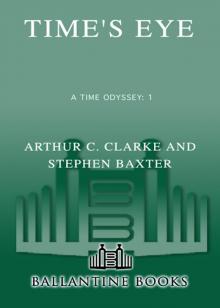 Time's Eye
Time's Eye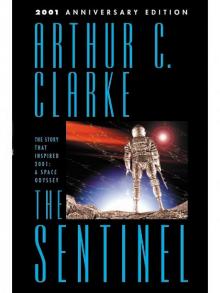 The Sentinel
The Sentinel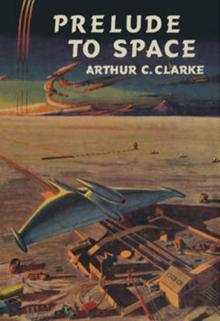 Prelude to Space
Prelude to Space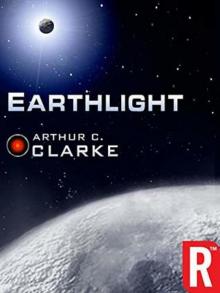 Earthlight (Arthur C. Clarke Collection)
Earthlight (Arthur C. Clarke Collection)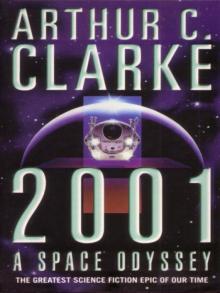 2001: A Space Odyssey
2001: A Space Odyssey Against the Fall of Night
Against the Fall of Night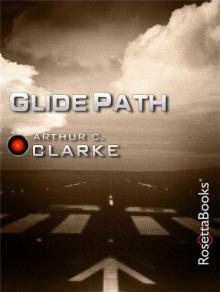 Glide Path
Glide Path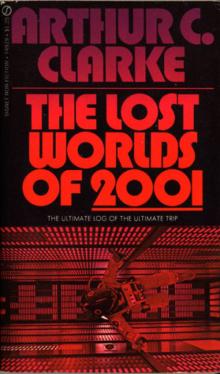 The Lost Worlds of 2001
The Lost Worlds of 2001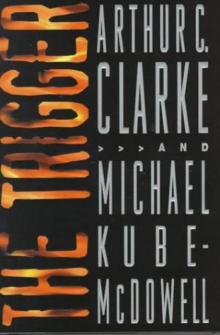 The Trigger
The Trigger Reach for Tomorrow
Reach for Tomorrow Islands in the Sky
Islands in the Sky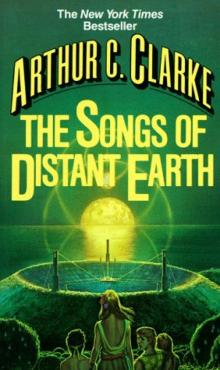 The Songs of Distant Earth
The Songs of Distant Earth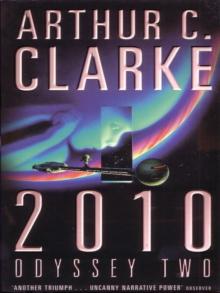 2010: Odyssey Two
2010: Odyssey Two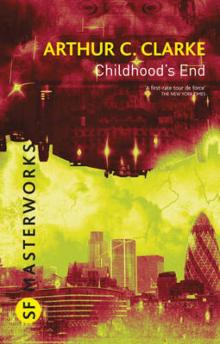 Childhood's End
Childhood's End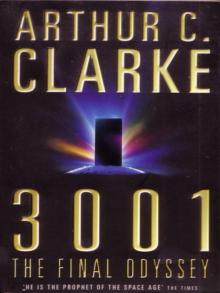 3001: The Final Odyssey
3001: The Final Odyssey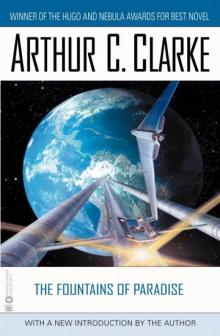 The Fountains of Paradise
The Fountains of Paradise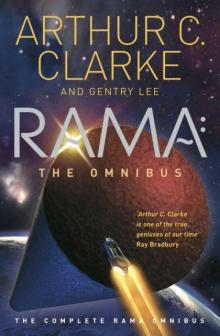 Rama: The Omnibus
Rama: The Omnibus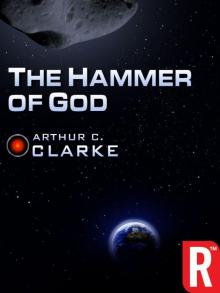 The Hammer of God
The Hammer of God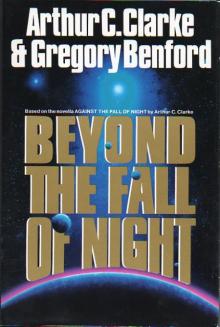 Beyond the Fall of Night
Beyond the Fall of Night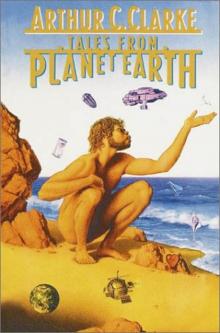 Tales From Planet Earth
Tales From Planet Earth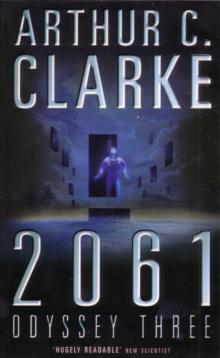 2061: Odyssey Three
2061: Odyssey Three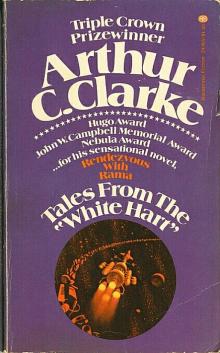 Tales From the White Hart
Tales From the White Hart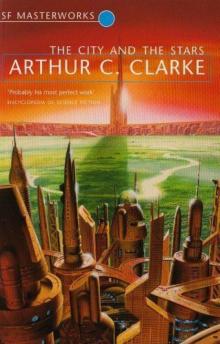 The City and the Stars/The Sands of Mars
The City and the Stars/The Sands of Mars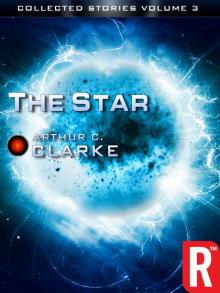 The Star
The Star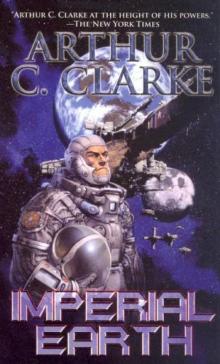 Imperial Earth
Imperial Earth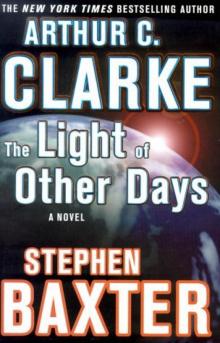 The Light of Other Days
The Light of Other Days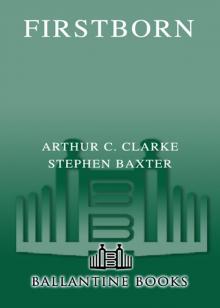 Firstborn
Firstborn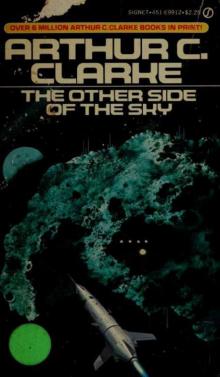 The Other Side of the Sky
The Other Side of the Sky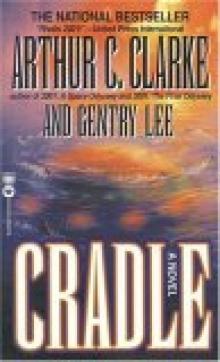 Cradle
Cradle The Wind From the Sun
The Wind From the Sun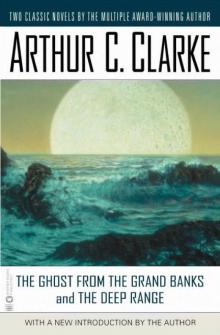 The Ghost From the Grand Banks and the Deep Range
The Ghost From the Grand Banks and the Deep Range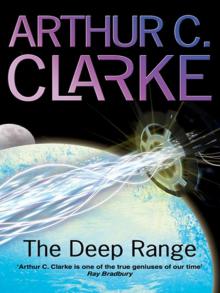 The Deep Range
The Deep Range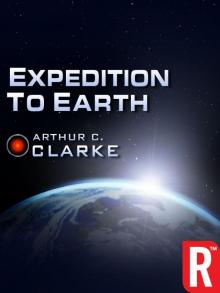 Expedition to Earth
Expedition to Earth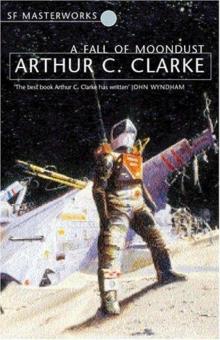 A Fall of Moondust
A Fall of Moondust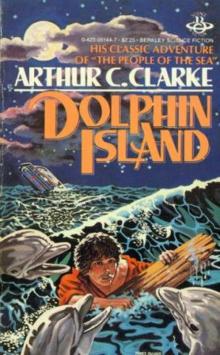 Dolphin Island (Arthur C. Clarke Collection)
Dolphin Island (Arthur C. Clarke Collection)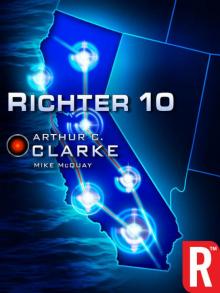 Richter 10
Richter 10 The City and the Stars
The City and the Stars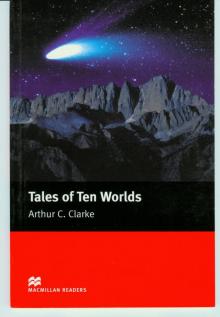 Tales of Ten Worlds
Tales of Ten Worlds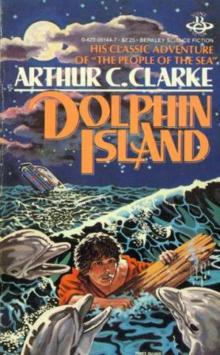 Dolphin Island
Dolphin Island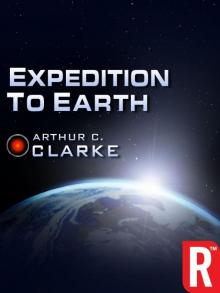 Expedition to Earth (Arthur C. Clarke Collection: Short Stories)
Expedition to Earth (Arthur C. Clarke Collection: Short Stories)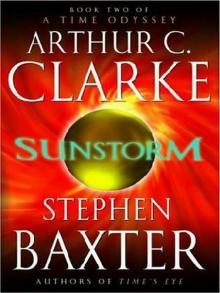 Sunstorm
Sunstorm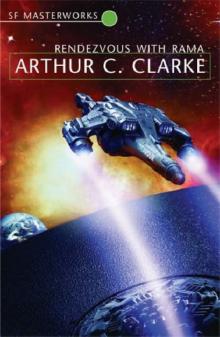 Rendezvous with Rama
Rendezvous with Rama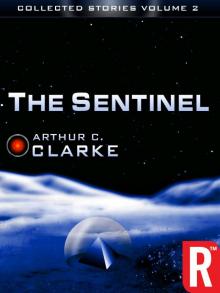 The Collected Stories of Arthur C. Clarke
The Collected Stories of Arthur C. Clarke Trouble with the Natives
Trouble with the Natives Rama Revealed r-4
Rama Revealed r-4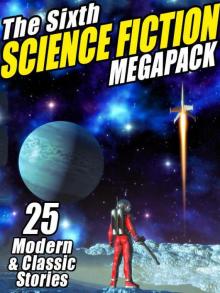 The Sixth Science Fiction Megapack
The Sixth Science Fiction Megapack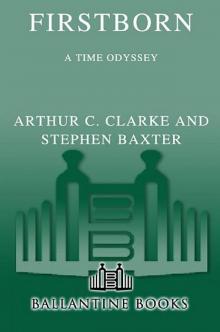 Firstborn to-3
Firstborn to-3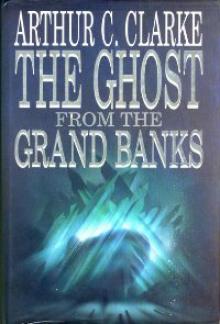 The Ghost from the Grand Banks
The Ghost from the Grand Banks Into the Comet
Into the Comet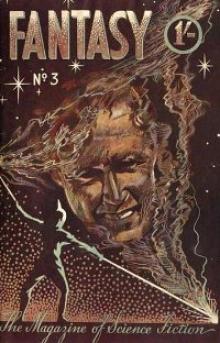 The Fires Within
The Fires Within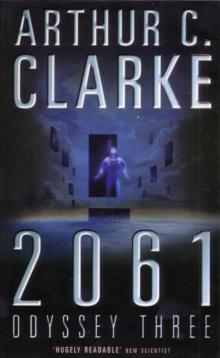 2061: Odyssey 3
2061: Odyssey 3 The Ninth Science Fiction Megapack
The Ninth Science Fiction Megapack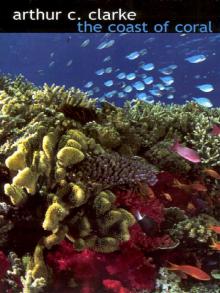 The Coast of Coral
The Coast of Coral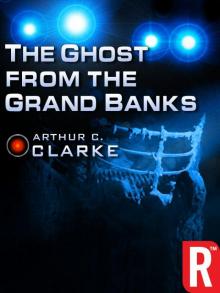 The Ghost from the Grand Banks (Arthur C. Clarke Collection)
The Ghost from the Grand Banks (Arthur C. Clarke Collection) The Space Trilogy
The Space Trilogy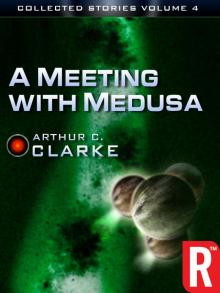 A Meeting With Medusa
A Meeting With Medusa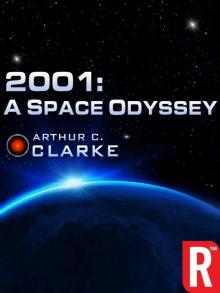 2001: A Space Odyssey (Arthur C. Clarke Collection: The Odyssey)
2001: A Space Odyssey (Arthur C. Clarke Collection: The Odyssey) Islands in the Sky (Arthur C. Clarke Collection)
Islands in the Sky (Arthur C. Clarke Collection)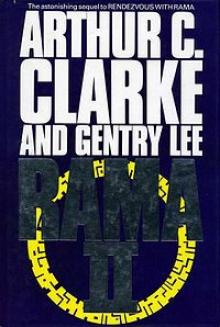 Rama II r-2
Rama II r-2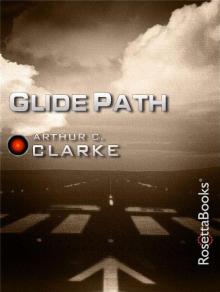 Glide Path (Arthur C. Clarke Collection)
Glide Path (Arthur C. Clarke Collection)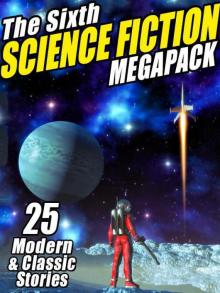 The Sixth Science Fiction Megapack: 25 Classic and Modern Science Fiction Stories
The Sixth Science Fiction Megapack: 25 Classic and Modern Science Fiction Stories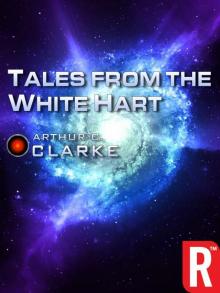 Tales from the White Hart (Arthur C. Clarke Collection: Short Stories)
Tales from the White Hart (Arthur C. Clarke Collection: Short Stories) The Reluctant Orchid
The Reluctant Orchid